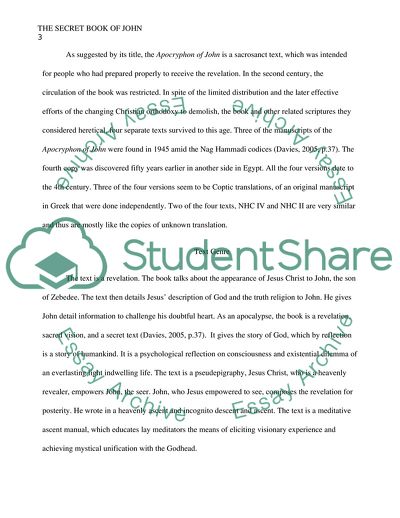Cite this document
(The Secret Revelations of John Book Report/Review Example | Topics and Well Written Essays - 3000 words, n.d.)
The Secret Revelations of John Book Report/Review Example | Topics and Well Written Essays - 3000 words. https://studentshare.org/religion-and-theology/1865669-the-secret-book-of-john
The Secret Revelations of John Book Report/Review Example | Topics and Well Written Essays - 3000 words. https://studentshare.org/religion-and-theology/1865669-the-secret-book-of-john
(The Secret Revelations of John Book Report/Review Example | Topics and Well Written Essays - 3000 Words)
The Secret Revelations of John Book Report/Review Example | Topics and Well Written Essays - 3000 Words. https://studentshare.org/religion-and-theology/1865669-the-secret-book-of-john.
The Secret Revelations of John Book Report/Review Example | Topics and Well Written Essays - 3000 Words. https://studentshare.org/religion-and-theology/1865669-the-secret-book-of-john.
“The Secret Revelations of John Book Report/Review Example | Topics and Well Written Essays - 3000 Words”. https://studentshare.org/religion-and-theology/1865669-the-secret-book-of-john.


